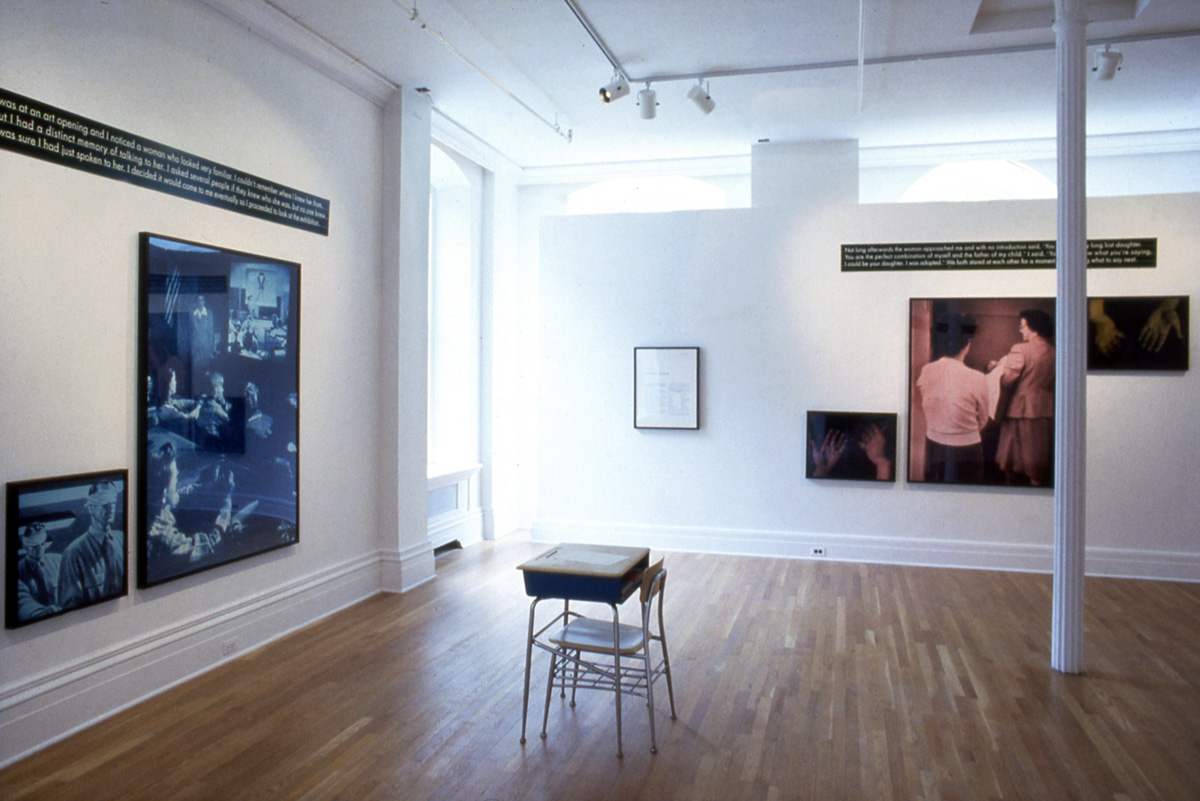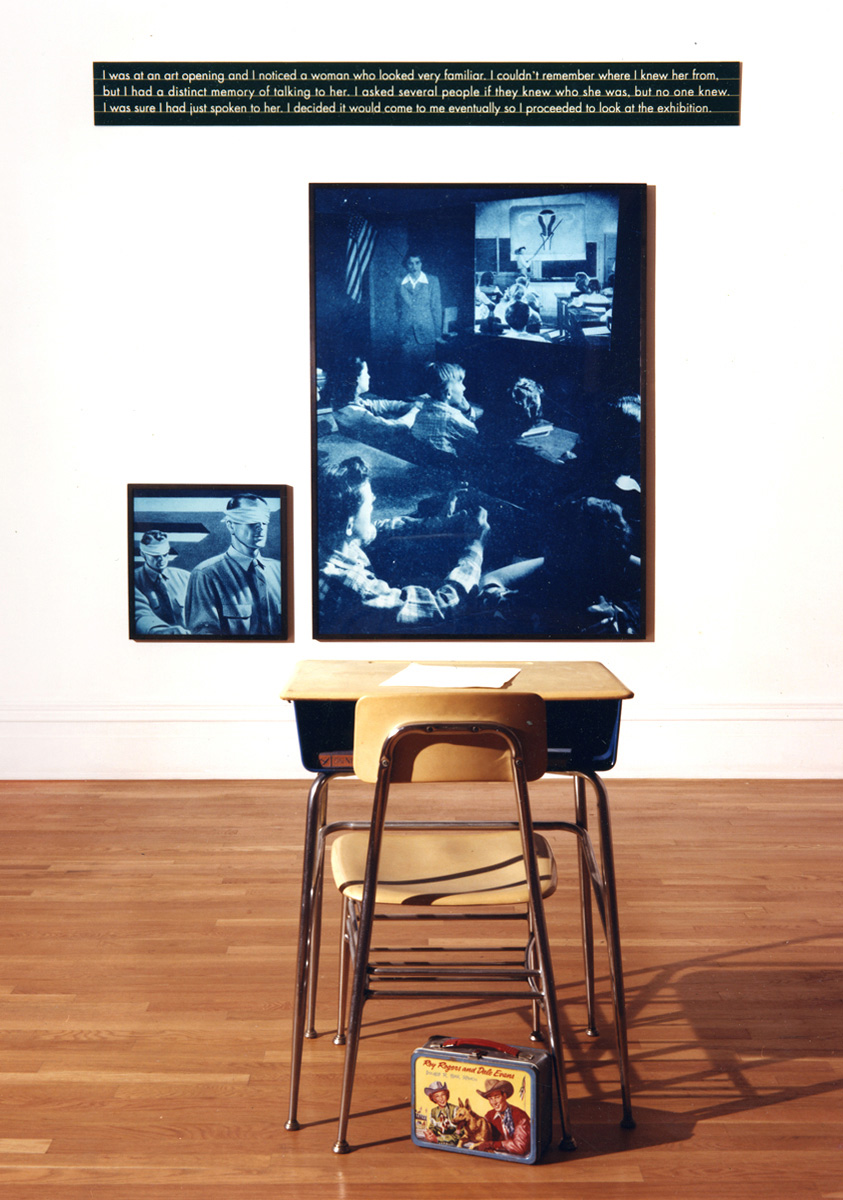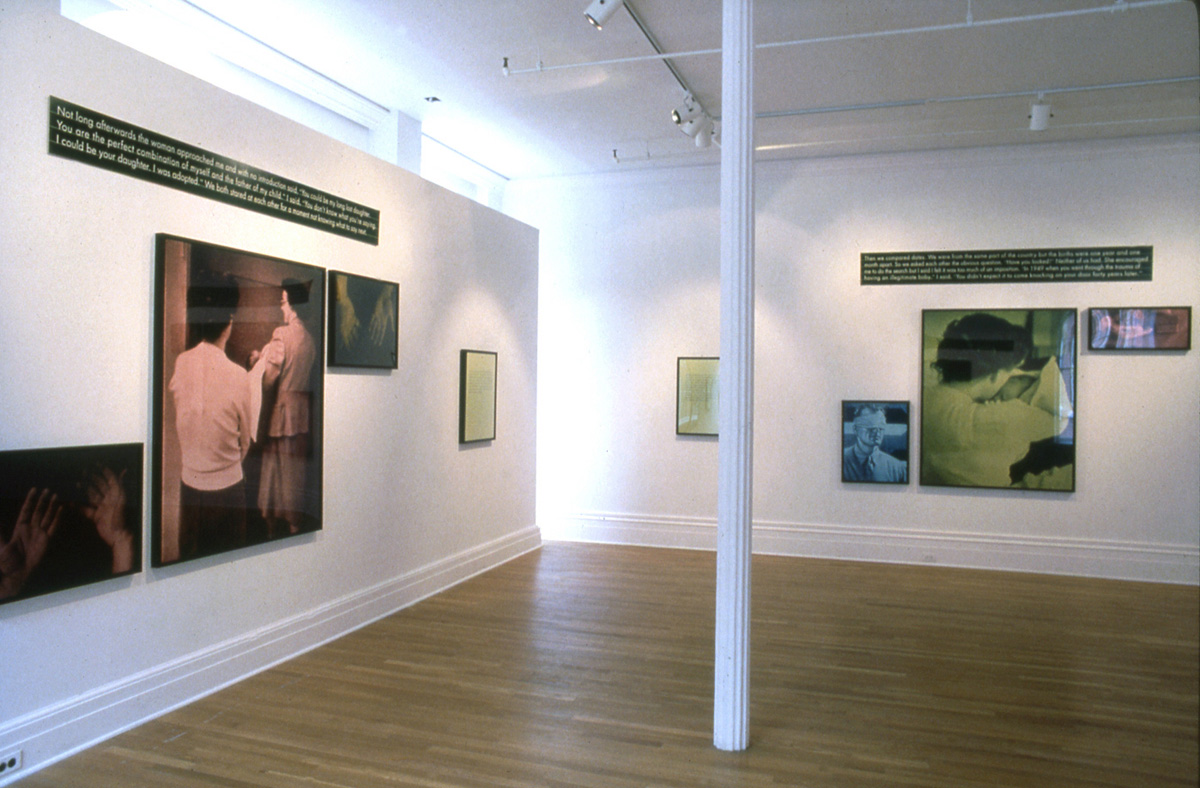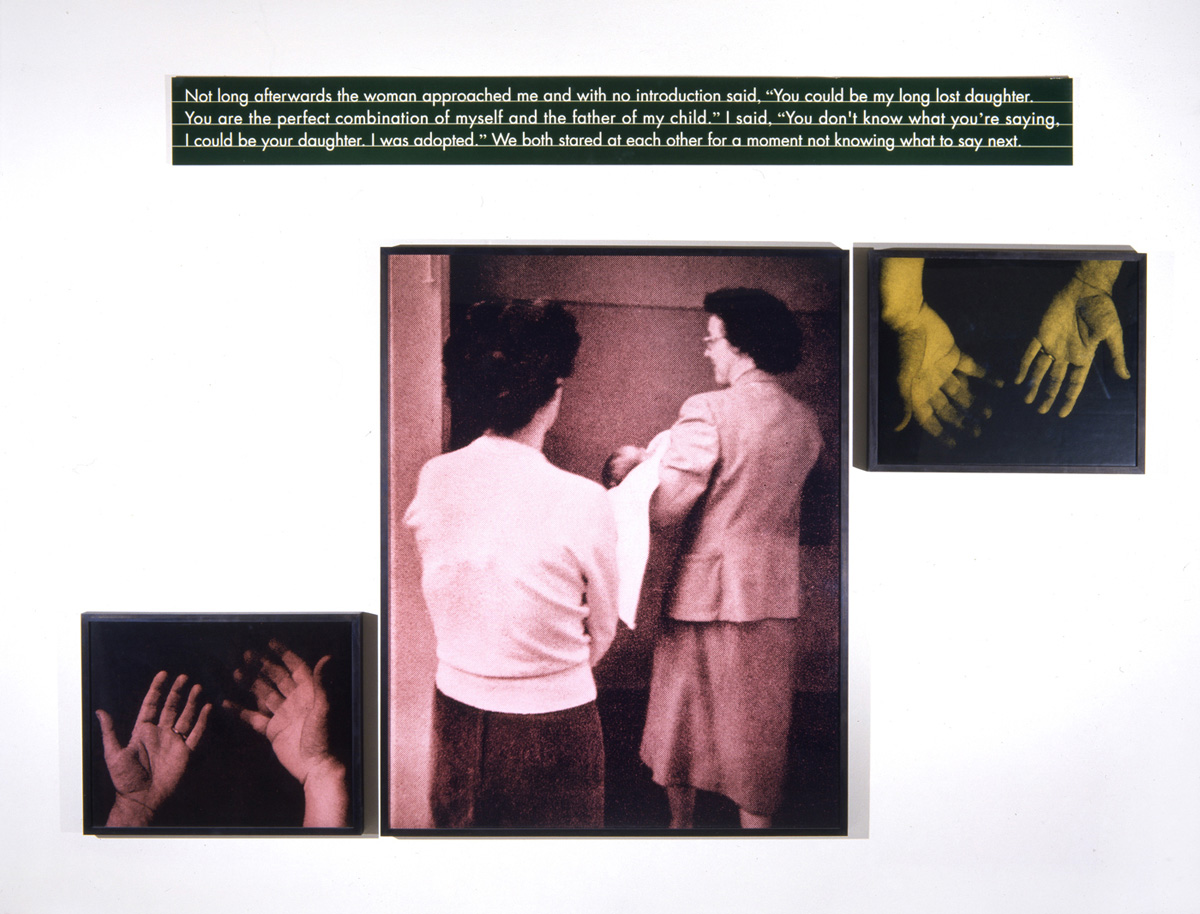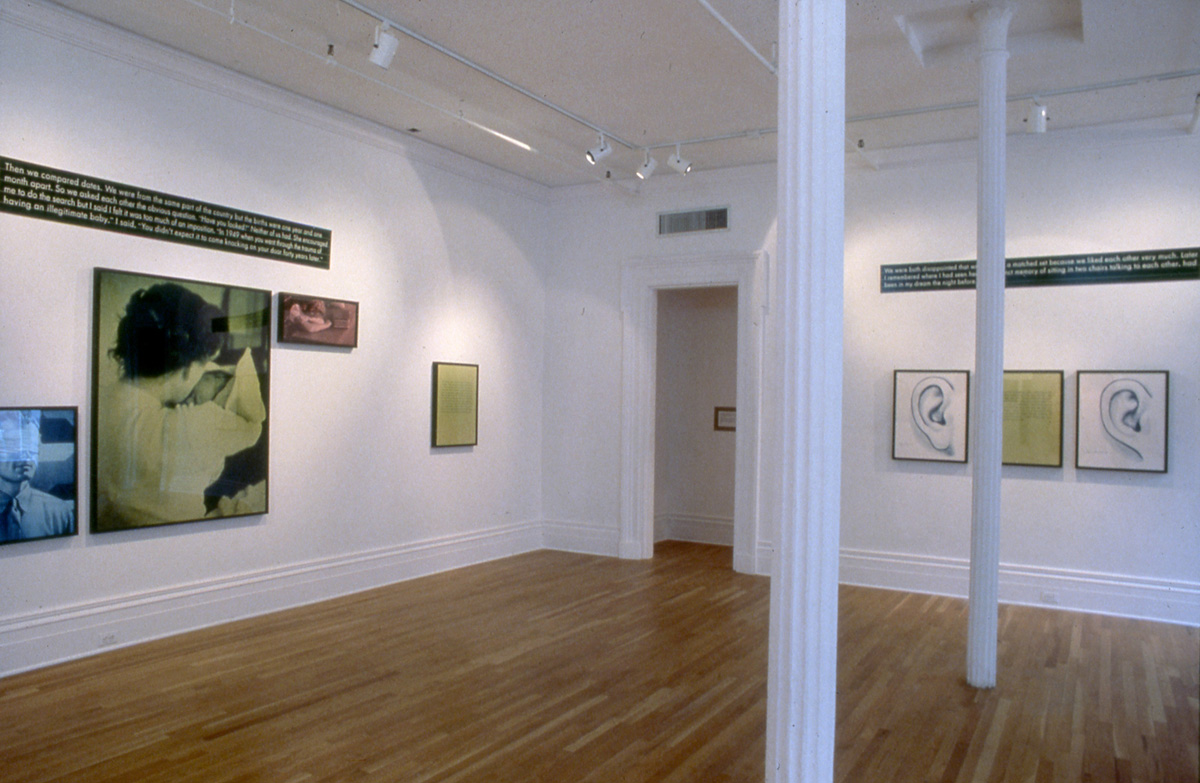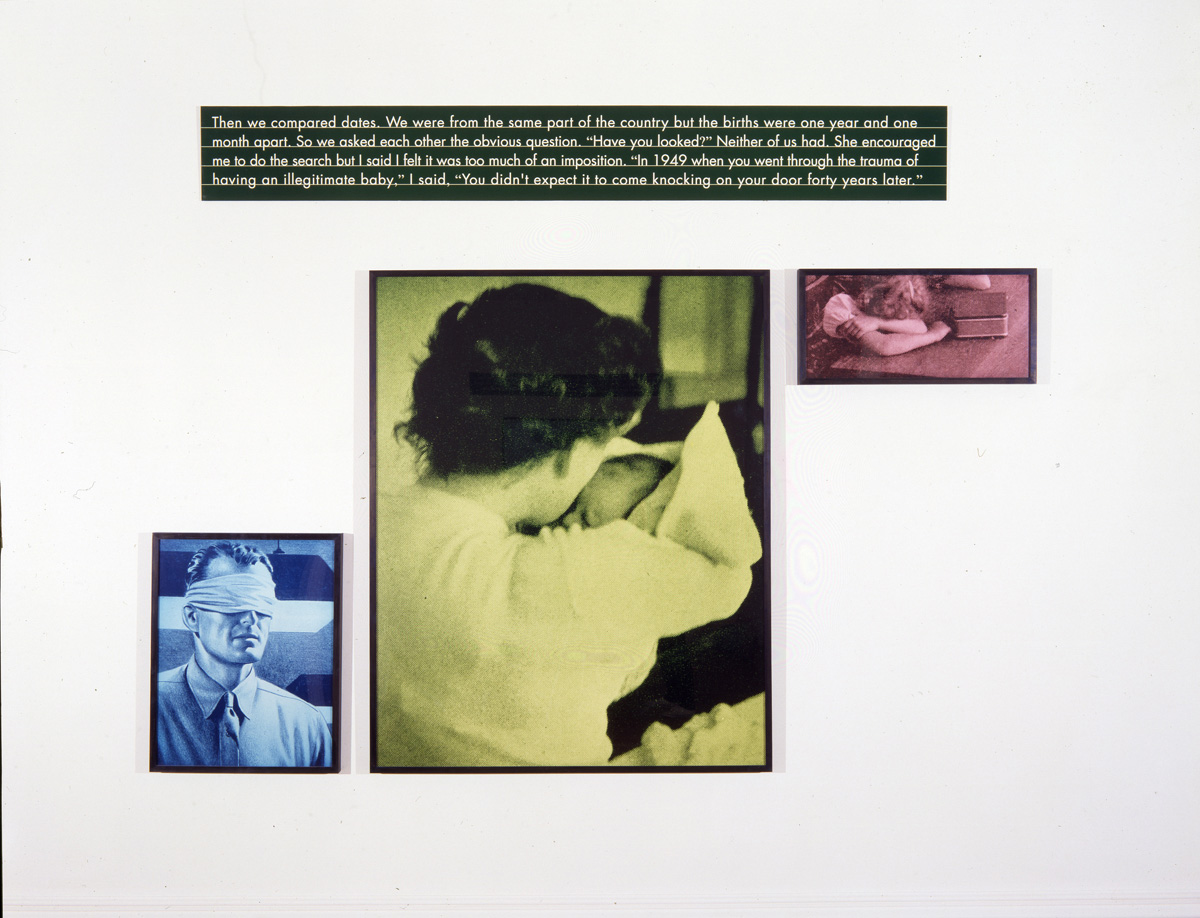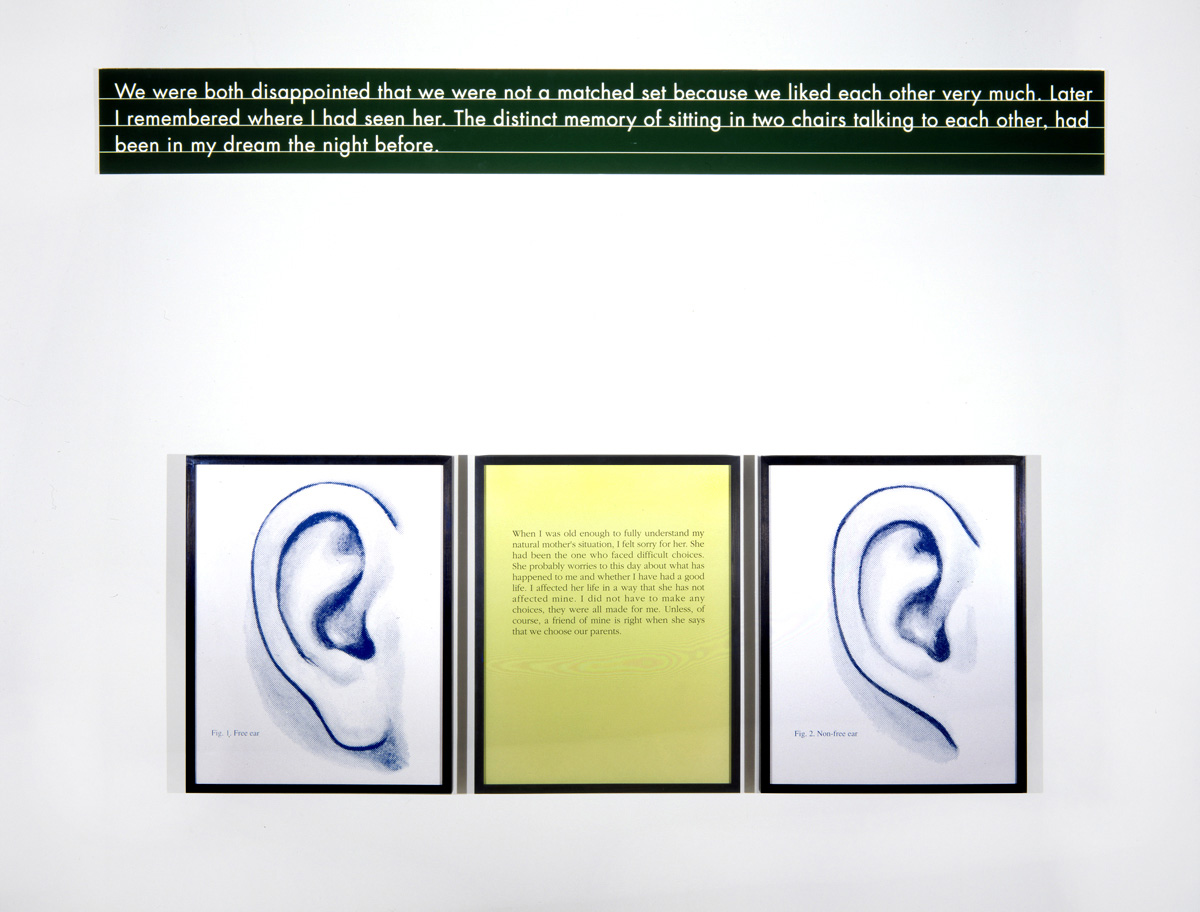Description
Entering Fessler’s Genetics Lesson installation, 1990, the viewer encounters an elementary classroom from the 1950s. The minimally furnished room has only one desk and chair. A large photograph on the wall in front of the desk depicts a classroom where a lesson in sex education is taking place. On closer inspection, the picture is more complicated. It shows a classroom of children looking at a film of another classroom of children receiving a lesson in sex education. Thus, the lesson taking place in this classroom is thrice removed. Typical of the era, the film depicts an egg and sperm meeting in a diagram, detached from real bodies or sexual desire.
A small image to the left of the large photograph extends the classroom to include a row of adult, blindfolded men. Above, a story begins. It is written in white letters on a dark green panel, with white lines under the type. The text panel replicates the placards displayed in elementary classrooms in the 50s that provided examples of perfectly articulated letters and numbers. On the desk, a homework assignment has been left behind. It asks students to fill out the hair and eye color of their parents and grandparents. Under the desk, a Roy Rogers and Dale Evans lunch box rests by the leg of the chair. The story written above the classroom image seems unrelated to the lesson at hand. It begins, “I was at an art opening and I noticed a woman who looked very familiar.”
As viewers move around the room, other text panels above the pictures each reveal a little more of the story. The images progress independently of the text, telling their own visual story. On the second wall, a woman looks on as another woman walks away with a baby. An image of the same set of open hands appears on each side of the larger image but one is hung upside down. As a result, one set of hands is taking and one receiving, but the object of the transaction is not clear.
Periodically, the visual and textual narratives are interrupted with smaller text panels. One displays pages from a 6th grade textbook open to a lesson in Genetics, in others Fessler recounts memories from her childhood. One reads:
“As a child I fantasized about being adopted by Roy Rogers and Dale Evans. I knew that they had adopted their children. Then I found out they were very religious which meant I would have to go to church every Sunday. So, I decided even though my parents wouldn’t let me have my own horse, I was better of where I was.”
As viewers move around the room, the multiple narratives begin to converge and it becomes apparent that Fessler had been approached by a woman who thought Ann might be the daughter she surrendered for adoption forty years earlier. The woman, it turns out, had been in Fessler’s dream the night before they met. Though the woman was not her mother, the chance meeting and resulting conversation changed Fessler’s understanding of adoption and set her on a path to collect the stories of other surrendering mothers.
Information
Genetics Lesson, installation by Ann Fessler, 1990
Medium: Ektacolor photographs; furniture
Documentation from Newhouse Center for Contemporary Art at Snug Harbor, New York, Family Stories exhibition, 1990, curated by Olivia Georgia.
In addition to the exhibition, Fessler organized a community outreach project that involved writing workshops for adoptees and surrendering mothers. The results were published as Adoption Stories, 1991. The workshops were Fessler’s first opportunity to facilitate the telling of other people’s stories as part of her artistic practice. It has since become a hallmark of her work. A few sample pages from the resulting Adoption Stories chapbook are viewable on this site.
In 1991 Fessler was awarded a residency at Nexus Press in Atlanta to create an artist’s book based on her Genetics Lesson Installation.


